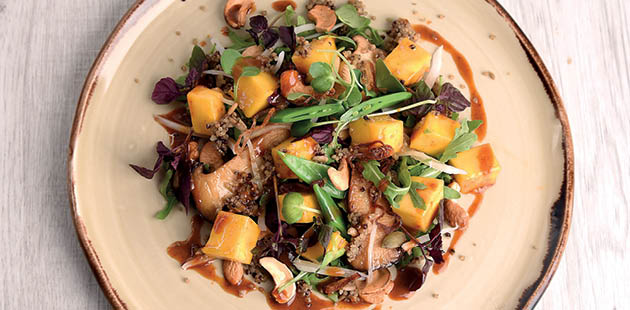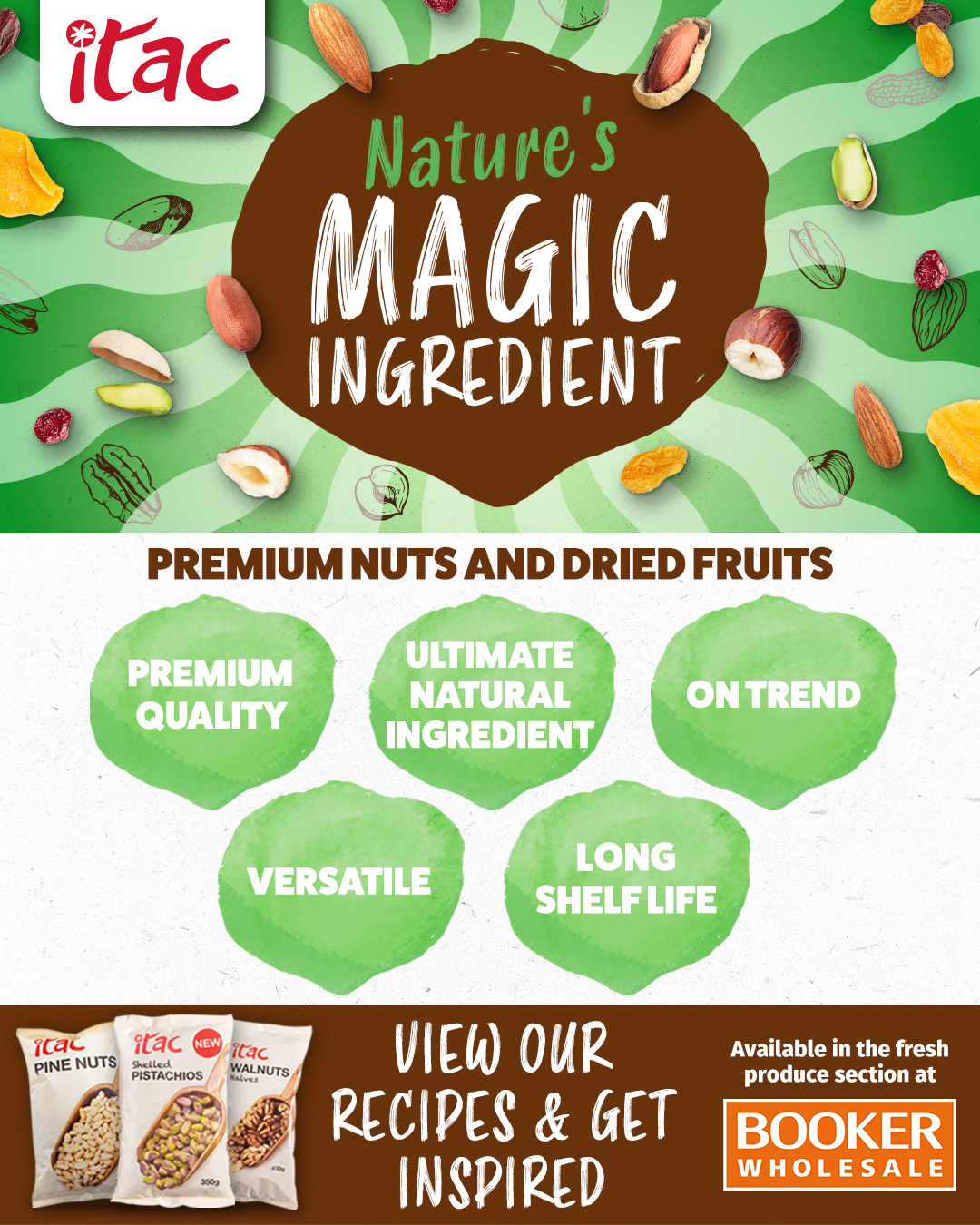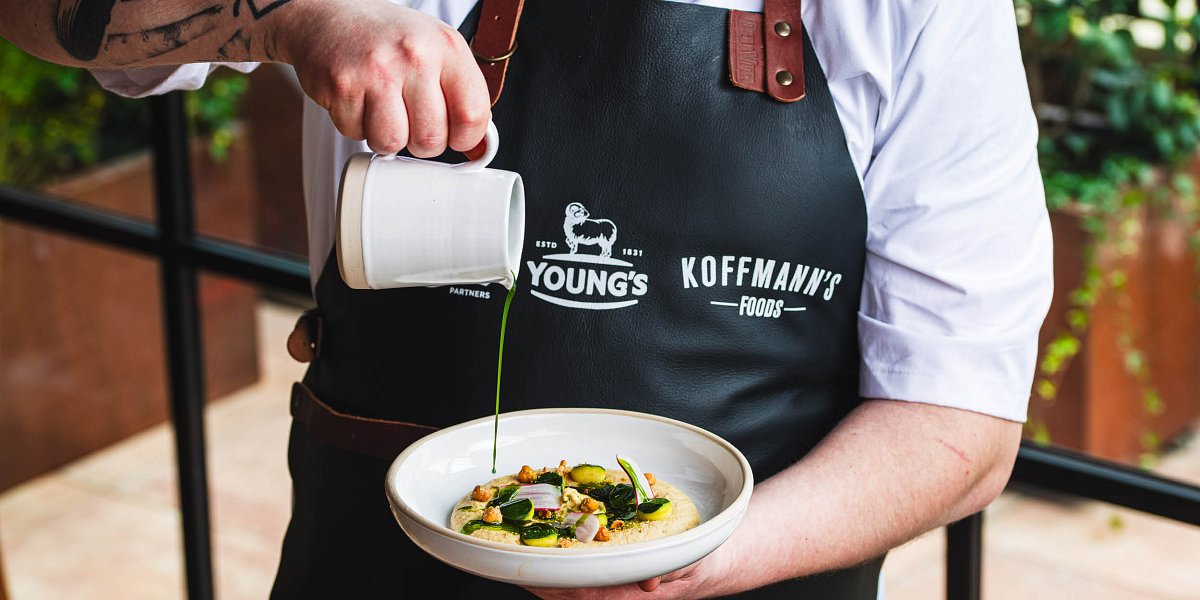Feature: vegan and plant-based food
Sales of vegan and plant-based goods continue to skyrocket, marking a significant opportunity for operators who tackle the segment with consideration and creativity.

The vegan and plant-based category has officially earned its place on mainstream menus. No longer thrust in the corner as nothing more than an afterthought, customers have come to expect a range of high-calibre options to choose from, whether they are fully vegan, veggie or anywhere in between.
A series of YouGov polls conducted in several key countries estimates that some 24 million people adopted a plant-based diet for Veganuary this year, highlighting the growing commitment to cleaner-label and veg-forward dishes. More than 2,100 new vegan ingredients and menu items were launched in January as a result, highlighting the success of product development within the segment in recent years.
“There is a pivotal role for the hospitality sector to play when it comes to helping customers achieve the desired reduction in meat consumption,” says Dr Tracey Jones, global director of food business at Compassion in World Farming. “Leveraging their expertise in marketing and customer engagement, they can actively promote plant-based options on their menus by offering enticing and flavourful dishes that appeal to customer preferences.”

Fried chickpea with Nutbourne tomatoes at Young's pub The Constitution (Image – Nic Crilly-Hargrave)
Broaden your reach
A major advantage of investing in your vegan offering lies in its potential to attract a wider audience. “Guests really appreciate that we take this offer seriously and have a range of options,” say Gen Wood and Jay Bond, the respective general manager and head chef at The Constitution in Camden.
“A mix of meat and veggie/vegan options is important to ensure there’s something for everyone, though do be careful not to oversize the menu. The main challenge is striking the right balance between veggie and vegan. Not all vegetarians and flexitarians are after vegan food, especially where there is a substitute meat or cheese product, as they can be quite processed.”
To strike the ideal balance, Wood and Bond suggest starting with a few strong options and taking note of diner feedback. “This is far more effective than adding loads of alternatives for the sake of it,” they chime.
On the contrary, Simon Owen, head of Redefine Meat, feels that balance is not necessarily the secret sauce to nailing your plant-based menu. “It’s about being able to offer premium plant-based products that are on par with their meat counterparts and sit in a totally different league to other vegan options,” he posits. “Meat-eaters are more likely to choose a vegan dish if the quality matches the others available.”
Across the Fuller’s estate, all vegan options are clearly highlighted with a ‘PB’ mark on menus. “On our websites, you can easily filter through dishes based on dietary requirements, so it’s easy to see which are plant-based,” says Ella Cranmer, food marketing manager for the pub group. “We try to make plant-based dishes that appeal to all, not just those who follow a vegan diet. For example, our salads are plant-based with the option to add meat or cheese. This gives our customers even more options – something we know is important to them.”
Having conducted extensive research into customer demographics, chefs at Fuller’s pubs are empowered with a detailed understanding of the business’s customer base, and can therefore tailor menus to better suit their specific requirements. “This leads to well-constructed menus across our estate,” adds Cranmer. “With valuable data insights, we can make sure we’re providing the right ratio of dishes at the right sites.”
Whether your venue has access to such data or not, a key learning to take away is that the incredible number of people on the hunt for fulfilling meat-free options means operators can no longer afford to view the segment as an afterthought. “Strong meat-free dishes packed with flavour can help drive sales, especially for groups and families seeking multiple menu options,” add Wood and Bond. “When guests are choosing where to eat, more often than not, the non-meat eaters are the driving force in deciding where to go.”

Vegetarian sloppy Joe from Kerrymaid
Diversify your dishes
Consumers often don’t know they want something until it’s presented to them – which certainly seems to be true where all things plant-based are concerned. Their sense of adventure is flourishing, giving kitchen teams a chance to experiment with vegan options inspired by global cuisines.
“Flavours from the Americas are always popular, from deep south barbecue, with its sweet and sticky notes; to a delicious, fruity Caribbean jerk,” says Paul Saunders, marketing manager at Major International.
The best way to pique curiosity of guests is to offer a range of top-notch options that are so good, it’s difficult to choose!
To add to the vast list of perks that come from refining your vegan offering, studies have shown an association between having more plant-based menu items and an increased frequency of consumers ordering plant-based options when dining out. As Noel Clarke, senior vice president of international at Impossible Foods, observes: “Using plant-based products that look, taste and sizzle just like animal meat means that chefs have the freedom and creativity to produce something innovative. This could be a fresh spin on an old classic, or a totally new culinary application.”
A Cambridge University study of more than 94,000 out-of-home meal choices reveals how diners can be ‘nudged’ towards making more sustainable choices. It found that doubling veggie menu options – from one in four to two in four – increased the proportion of plant-based purchases by between 40% and 80%, without impacting overall food sales.
“This is something that pub and bar operators could look at if they wanted to create more sustainable menus for guests,” says Gordon Lauder, managing director of Central Foods. “Make sure the descriptions of plant-based options are tempting. Avoid words like ‘meat-free and instead use creative, tasty descriptions to encourage meat-eaters and flexitarians to try them.”
A well-thought-out mix of veg-forward options emphasises that it’s a focus on your menu and that your venue takes the offering seriously, say Wood and Bond. “Also, team recommendations to diners can help to highlight and sell non-meat dishes – especially to guests who would typically order meat dishes.”
Bond and his colleagues use the same mix of classic and modern cooking techniques that generally applied to meat-and fish-based dishes with plant-based products, lifting and enhancing flavours with the most suitable herbs and spices. “Make the most of your surroundings,” he advises. “Use sourced or foraged edible products that are in season to maximise customer interest.”
According to Cranmer, consumer demand is shifting away from imitation meats, which can be highly processed. “Instead, we find customers are often looking for more natural and nutritious ingredients with plenty of protein,” she explains. “We have seen a move towards protein-rich, natural ingredients such as legumes, tofu and nuts. Our plant-based Made in Hackney burger, which has been very popular, is a wholefoods alternative to imitation meat. The patty comprises a selection of tasty and healthy ingredients – including mushrooms, beetroot, quinoa and more.”
The team at Fuller’s worked alongside Made in Hackney, a community cookery school and emergency food support service, to offer skills courses to chefs and inspire them to get creative when producing plant-based dishes. “During these sessions, we looked at alternatives to imitation meat and how best to use natural and nutritious ingredients. Variety is key, so go ahead and try out products that you’ve never used before.”

Quinoa and mango salad from Major International
Quality matters
For hospitality businesses, the ultimate goal is to produce climate-friendly dishes that don’t in any way compromise on quality or taste. Failure to achieve this could mean your business losing out on future repeat custom – especially with the cost of living crisis forcing consumers to keep a close eye on the purse strings. In the words of Karen Heavey, brand manager at Kerrymaid: “With people still likely to be mindful of what they spend with the on-trade in the months ahead, all dishes must hit the spot when it comes to quality, so keeping in touch with the latest food trends and flavours is essential when creating plant-based menus.”
With heightened focus on quality and nutrition, consumers want to know where and how products are made before buying. This means there’s now far greater attention on ingredient labels than ever before, and punters have come to expect a certain level of simplicity, transparency and traceability. As Paul Saunders, MD of Proper Cornish, notes: “With an eye on sustainability, there is a shift in global food towards regional agriculture, with shorter and more transparent supply chains. Consumers are beginning to count carbon as much as calories and are making conscious choices to protect the planet.”
Operators are keen to show their support for this trend – and rightly so, since the climate crisis is the defining issue of our time. But the wider industry must strive to take on the role of educator, sharing knowledge to allow guests to make informed choices, all the while listening to consumer needs and adapting their offer accordingly. As Samantha Winsor, marketing manager for Lantmännen’s Americana brand, sums up: “Vegan living and following a plant-based diet is no longer a trend, but a lifestyle, and a constantly evolving one at that. Operators will do well to keep on top of it so that all associated opportunities can be maximised.”












